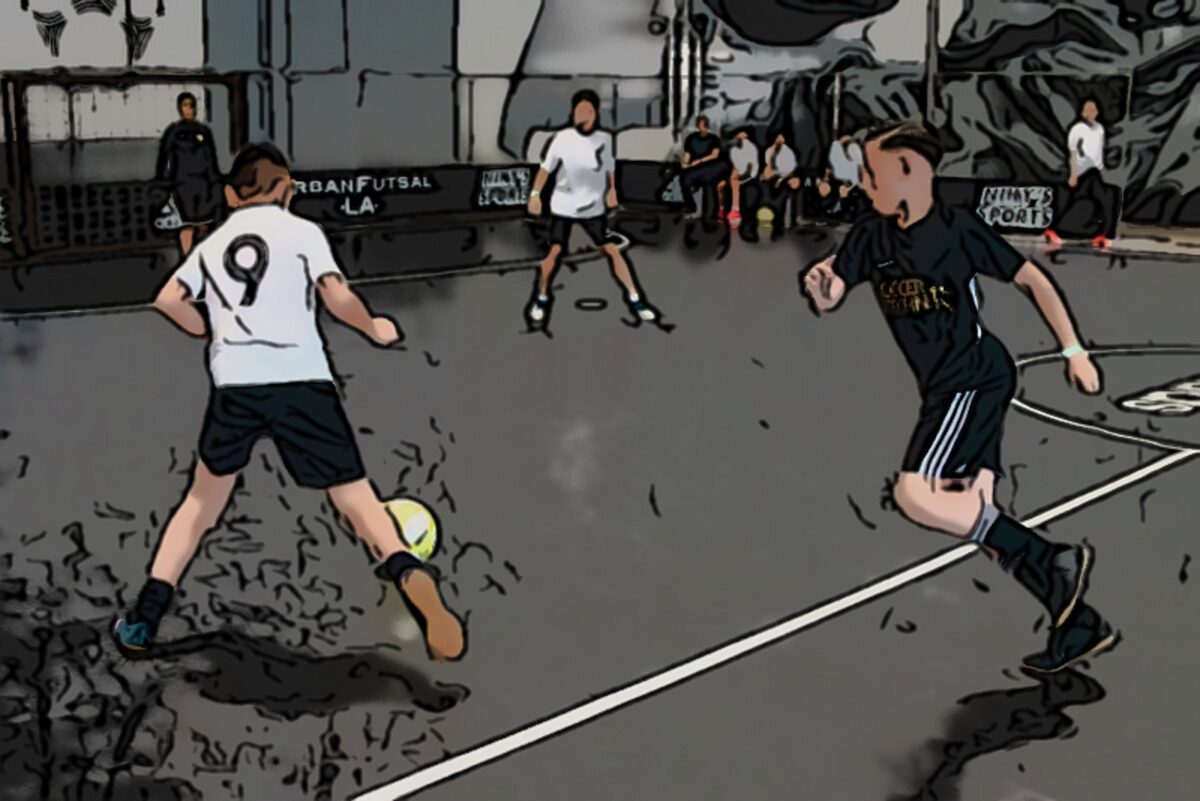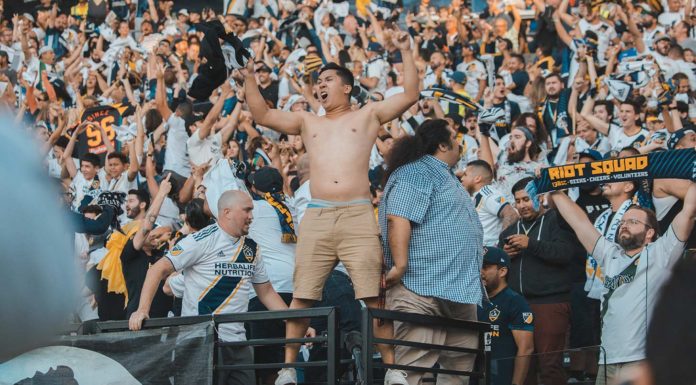The fast-paced world of club soccer isn’t just about shuttling kids to practices, cheering them on at games, and traveling to high profile tournaments on weekends. Spurred on by the extra-charged, competitive atmosphere and the large amounts of money that are exchanging hands, there’s an unfortunate element of bad behavior that’s often bubbling just beneath the cheerful surface. In this two-part series, we will explore six of the most problematic issues that are occurring in American youth soccer — infighting within clubs, brazen poaching of players, rampant embezzlement, difficult parents, feeble club leadership, and dirty politics.
Most people in the sports circle are keenly aware that there is strong competition and rivalry that exists between different clubs in youth soccer. Sometimes we even see that battle spill over into other forms of confrontation that occur off the pitch as well. And as with all things in life, there are both good apples and bad apples amongst the cadre of coaches.* But what many people don’t realize is that one of the biggest headaches for coaches is the bad behavior from fellow coaches within their own club.
Infighting Amongst Coaches
This issue most often arises when a club has more than one team in the same age bracket — which is often. Having multiple teams within the same age bracket will undoubtedly create an unavoidable sense of competition between fellow coaches and players. But while a decent amount of friendly rivalry is both natural and healthy, the predicament occurs when a coach unwisely behaves in ways that are more aligned to their own self-serving interests than that of the player or the club.
It’s very common for soccer clubs to have, for example, a flight 1 and a flight 2 team in the same age bracket. The relationship between coaches sometimes shifts to an uneasy dynamic when the flight 1 coach understandably wants the best players while the flight 2 coach justifiably resents having to put together a squad from the “leftover” players.
It can get even more contentious when there are two or more teams in the same flight and age bracket. Since they are now both in the same skill bracket, an opportunistic coach can’t point to their flight level as justification for nabbing certain players. This inevitably leads to some coaches trying to outshine or outperform their counterpart in order to stake claim as the “better team.” Another detrimental consequence is that these coaches find themselves competing against each other, sometimes blatantly, and will invariably put even more emphasis on wins over development resulting in a negative snowball effect.
There are some dubious coaches who will even pretend to be supportive and suggest combining practices with both teams. They disguise their hidden agenda under the pretense of “working together as one club” while using the opportunity to entice players over to their squad. One unnamed youth coach told me that in the past, these unscrupulous individuals have gone as far as to “put on a show” during such combined practices in order to appear more earnest and appealing to the other parents.
Most coaches would agree that a stable environment backed by supportive leadership and a strong culture will mitigate most of these potential internal issues from occurring within a club. However, the problem lies in the sad reality that many soccer clubs are often lacking the stout leaders at the helm that are necessary to promote a disciplined and healthy club culture.
Poaching Players, Teams, and Coaches, Oh My!
The idea of poaching is a slightly more complex and delicate issue. There are some coaches who stringently view any of their players who have been recruited to another team as having been “poached.” Other coaches look upon the very same scenario with an even-keeled view of their player as having been “scouted.”
Some draw the distinction between poaching and scouting depending on when a rival club approached a player or parent — whether it was during or after the season. A lesser number of coaches surprisingly hold a laissez-faire attitude that any approach is fair game with the steadfast belief that players should feel free to leave if the grass is truly greener — and also feel free to return upon discovering it wasn’t.
However, the situation gets far messier when there are multiple families involved in making a collective decision to leave en masse. Oftentimes, clusters of family groups have private discussions prior to making their decision public that will have a significant impact on the dumbfounded families of teammates who were not privy to these conversations. The issue of players being poached has caused enough dissension around youth leagues such that some organizations have taken the initiative to clearly define and ban such behavior.
It’s not uncommon to have a portion of a team conspiring to leave and join a new team all together at season’s end. One can imagine the emotional toll this may have on those who were not included and the feelings of betrayal by those they once considered close friends. Unfortunately, many relationships have been severed after such occasions.
The most touchy situations usually occur when a club’s staff member is directly involved in the decision to leave. Emotions can get further heightened when a staff member, such as a team manager, is part of a group decision to leave with the clear dilemma being the potential conflict of interest. The families of those who were not aware of their decision to leave often lob accusations that if one has a role as part of the team’s staff (even as an unpaid volunteer), he or she should’ve made it known to everyone beforehand in the collective interest of the team.
This “lifting and shifting” of teams has even resulted in acrimonious lawsuits between clubs and former coaches.
In addition, the most toxic situation probably happens when a team’s coach decides to switch clubs after being “poached” with a better offer or situation. Understandably, parents and players usually have a much closer bond with their coach than to any other particular club entity. So it goes without saying that when a coach makes a decision to leave, a significant portion of the players on whichever teams he or she was coaching will usually follow.
When a club experiences the departure of an entire team or several teams at once, consequently there is a sizable loss of revenue that is incurred. This “lifting and shifting” of teams has even resulted in acrimonious lawsuits between clubs and former coaches. As a result, many youth clubs have implemented a non-compete clause into their coach contracts that typically last one year or more.
Rampant Embezzling of Club Funds
One would think that with a social community dedicated to a healthy lifestyle for youths, the black stain of financial malfeasance would be an odd rarity — yet one would be very wrong. There are nearly endless cases ranging from volunteer soccer moms acting as treasurers to long-time board members who have been caught stealing oftentimes hundreds of thousands of dollars from the clubs they were supposed to be supporting.
In fact, it is small, volunteer-run organizations like soccer programs that are extremely vulnerable to fraud and embezzlement. The likelihood that a single person is usually responsible for administering the group’s finances exponentially increases the risk.
Sadly, many of the people who end up embezzling from their soccer club begin by taking smaller amounts that they intend to repay. It is almost always committed by volunteer board members in good standing who start by taking small amounts and then boldly progress to larger amounts. They usually remain undiscovered for years until a suspicious board member or officer uncovers financial irregularities.

One preposterous incident occurred where a club treasurer tried to confess after the board discovered suspicious activity in the club account. The club president told her to simply resign, stating that the club did not want to make a big deal out of it. Shockingly, it was later discovered that the club president had also embezzled more than $70,000 herself and had been worried that she would be discovered. Investigators found she had spent the money on everything from spa services and pet supplies to her home mortgage and utility bills.
There are differing reasons ranging from financial desperation to simple greed that motivated these individuals to steal from the very organizations that entrusted them. However, most people started out with the best of intentions and yet, somehow, something went wrong and no one was watching.
Law enforcement estimate that only half of the discovered cases are made public as the organizations want to protect their reputation and also not hamper their ability to raise future funding. Unfortunately, there is no evidence indicating that the problem is getting better which also isn’t aided by the fact that we do not have a national agency to oversee our youth sports.
To be continued…
___________
*If you’re a good apple, you shouldn’t take offense to the behavior of certain bad apples being pointed out. If you do take offense, then you just might be a bad apple.
Next week we’ll continue with the second part of The Hidden, Ugly Side of Youth Soccer: Nightmare Parents, Feeble Leadership and Dirty Politics. Check out our first two Naked Truth installments where I discuss the root cause of American men’s soccer’s struggles and my stance on the pay-to-play debate.
Have a strong reaction or question related to this story? Send us an email with guaranteed anonymity to be featured in our next ‘Anonymous Mailbag.’










Theres a sense that for any competitive pursuit, you’ll have competition at every level. Im guessing the parents are also poaching kids from other teams especially if it can accentuate their own kid’s performance. Im definitely not surprised at the financial “irresponsibility”. It happens in every organization large and small. But when it’s in the Context of stealing from kids, i guess it can be seen as more egregious. Good to bring all of this to light but what’s the solution? Charge more to kids and create a more legitimate program and system??
It’s impossible to eliminate financial malfeasance but I think it’s good practice to have more than one person with financial responsibility and oversight for soccer clubs. I think having regular accountability would deter more people from being tempted to embezzle funds.